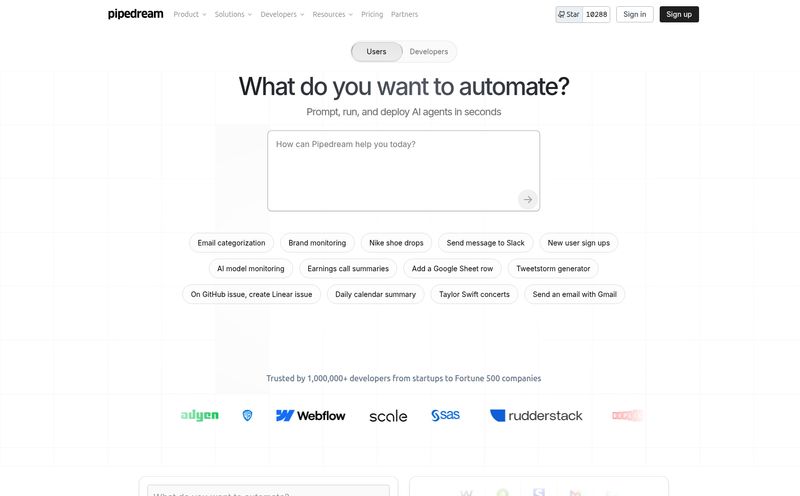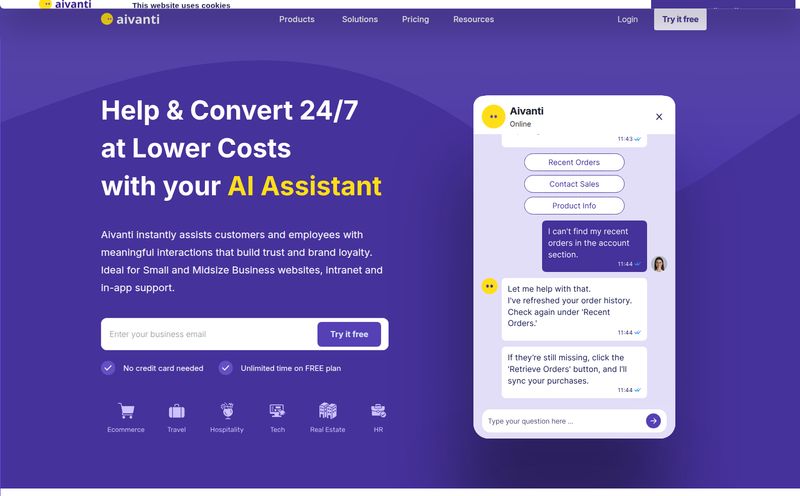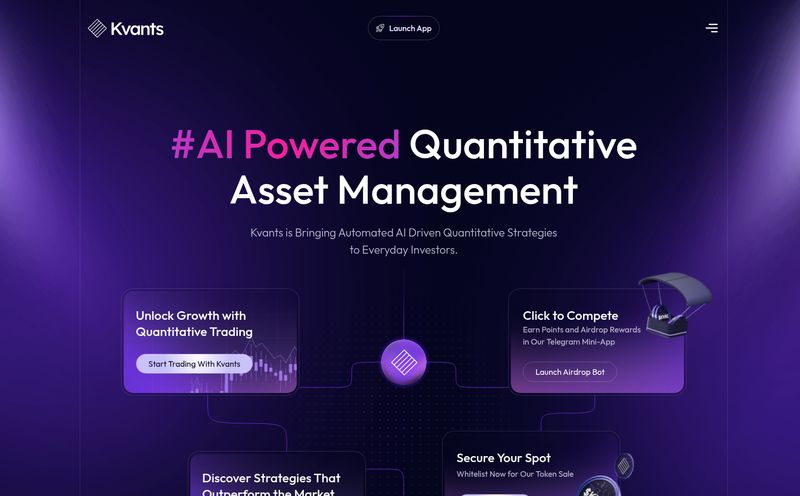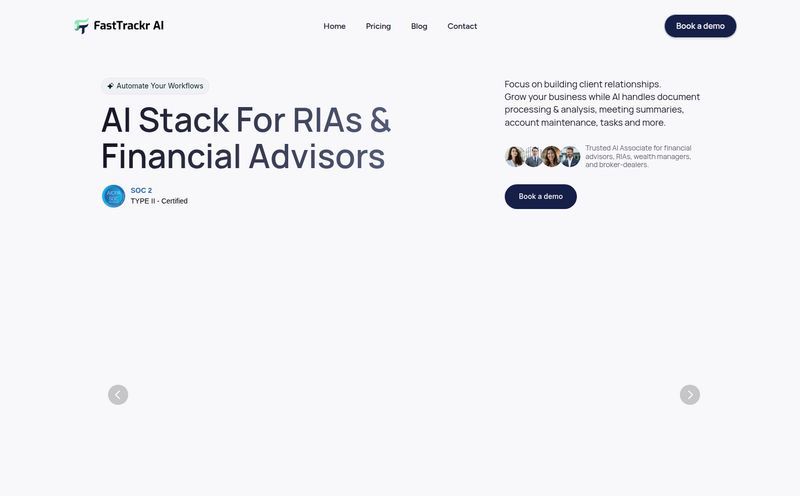If you've ever tried to get serious about your finances, you've stared into the abyss of a spreadsheet. You've downloaded your bank statement, a messy CSV file full of cryptic vendor names, and felt a little piece of your soul wither. The hours spent manually categorizing every single coffee, every Amazon purchase, every weird little transaction... it's a necessary evil, right? Or is it?
For years, I've been a spreadsheet warrior. I’ve built monstrous Google Sheets with more VLOOKUPs and pivot tables than you can shake a stick at. It was a badge of honor. But lately, I've been asking myself: at what cost? All that time spent on data entry is time not spent on strategy, on actually improving my financial picture. It's the digital equivalent of meticulously organizing your vinyl collection instead of, you know, listening to the music.
That's the rabbit hole that led me to stumble upon a tool called Expense Sorted. The name is pretty on the nose, but its promise is what caught my eye: AI-powered expense categorization. It claims to do the boring part for you. So, as a professional tinkerer in the world of SEO and data, I had to see if it lived up to the hype.
So, What Exactly is Expense Sorted?
At its heart, Expense Sorted is an AI assistant that lives inside your financial workflow. It's not a whole new, locked-down budgeting app that forces you into its ecosystem. Instead, it’s a smart layer that connects to tools many of us already use. Think of it like a clever plugin for your financial life. Its main job is to look at your list of transactions—like 'AMZN Mktp US' or 'SQ SQ THE CORNER CAFE'—and automatically assign them to the right budget category, like 'Shopping' or 'Restaurants'.
It's primarily built to work with Google Sheets, which is a massive win for all the DIY budgeters out there. But it doesn't stop there. It also plays nice with popular budgeting platforms like Tiller and Lunch Money, with PocketSmith integration apparently on the horizon. This shows the creators understand that people’s financial setups are personal and they're not trying to reinvent the wheel, just make the one we're all using roll a whole lot smoother.
The Familiar Pain of Manual Expense Tracking
Why does a tool like this even need to exist? Because manual categorization is, frankly, a massive pain. You start the month with good intentions. "This month, I'll track everything!" you declare. By the 15th, you have a backlog of 100 transactions. You can't remember if that $15 charge at "TRGT-STORE-0451" was for groceries or a new throw pillow you absolutely didn't need. So you put it off. Soon, the task becomes so monumental that you just give up, promising to really do it next month. Sound familiar?
It's a cycle of procrastination fueled by tedious work. Even with custom rules and filters, you're always finding new transaction descriptions that break your system. It's a constant battle of digital whack-a-mole. This is where AI is supposed to step in and save the day.
How Expense Sorted Aims to Change the Game
So, does it? Well, I've been kicking the tires on it, and it's impressively slick. It’s not just about saving time; it's about removing the biggest point of friction in the entire budgeting process. Here's what stood out to me.
The AI That Actually Learns
Instead of you having to create a hundred 'IF/THEN' rules (e.g., IF description contains 'Chevron', THEN category = 'Gas'), Expense Sorted's AI looks at the transaction and makes an educated guess. The first time you run it, it gets a lot of them right. But the real magic is that you can correct it. If it categorizes your local pub as 'Groceries' (hey, it happens), you fix it once, and it learns. Over time, its accuracy for your specific spending habits gets scarily good. It’s less like a rigid program and more like a trainee who's eager to please and learns from their mistakes.

Visit Expense Sorted
Your Financial Data Stays Yours
This is a big one for me, and probably for you too. Most budgeting apps require you to hand over your bank login credentials. It's a standard practice, but it always feels a bit... iffy. Expense Sorted has a much better approach. The AI magic happens on their end, but the data itself—your raw transaction information—stays within your own Google Sheet. You copy-paste your transactions in, run the add-on, and it sends back the categories. Your sensitive data isn't sitting on some random server, which is a huge sigh of relief. This privacy-first stance is a major selling point in my book.
It Works With Your Existing Setup
I love that Expense Sorted isn't trying to lock me in. The fact that it integrates with Tiller and Lunch Money shows a deep understanding of the personal finance community. These are tools for serious budgeters. By integrating with them, Expense Sorted is positioning itself not as a replacement, but as an enhancement—a 'supercharger', as their site calls it. For the developers and extreme customizers out there, they even offer a Developer API. You can tell this was built by finance nerds, for finance nerds.
Let's Talk Turkey: The Pricing
Okay, it's cool, but is it affordable? The pricing is refreshingly simple, which I appreciate. No confusing tiers or hidden fees. They offer a 14-day free trial to test out the premium features, and after that, you've got two choices.
| Plan | Price | Best For | Key Features |
|---|---|---|---|
| Silver | $2 / month | Personal budgeters and those getting started. | 300 AI categorizations per month, Google Sheets & Lunch Money integration, Financial Freedom Spreadsheet access. |
| Gold | $10 / month | Serious budget managers, families, or small business owners. | Unlimited AI categorizations, priority support, and early access to new features. |
Honestly, the Silver plan at $2 a month is a steal. For the price of a single fancy coffee, you eliminate hours of mind-numbing data entry. 300 transactions cover my personal monthly spending pretty easily. The Gold plan makes sense if you're managing budgets for a whole family or have a side hustle with a ton of expenses you need to track. The unlimited categorizations and priority support are what you're paying for there.
The Good, The Not-So-Bad, and The AI
No tool is perfect, of course. Based on my experience, here’s the breakdown. The pros are pretty obvious: it saves a ton of time, it's easy to use, and it's designed with privacy in mind. It's customizable and integrates with other great tools.
On the flip side, it's not a self-contained universe. You need a Google account and some familiarity with Google Sheets to get the most out of it. And while the AI is good, it's not a psychic. It will make mistakes, especially at first. You still need to give your expenses a quick once-over to check its work. Finally, you are relying on a third-party add-on, which is true for many tools we use today, but it's something to be aware of.
It's About More Than Just Spreadsheets
Here’s the thing that really stuck with me from their website. The headline isn't "Categorize Your Expenses Faster." It's "How Much Time Can Your Money Buy?" This reframes the entire conversation. The goal isn't just to have a neat and tidy budget; the goal is to achieve Financial Independence, or what they call "Time Freedom."
By automating the most tedious part of budgeting, Expense Sorted isn't just giving you back a few hours a month. It's removing the biggest roadblock that causes people to give up on their financial goals. It lets you focus on the big picture: calculating your FI number, planning your runway, and making strategic decisions with your money. That's a powerful shift in perspective.
Frequently Asked Questions about Expense Sorted
- How does the free trial work?
- When you sign up, you get a 14-day free trial of the Gold plan features without needing a credit card. After the trial, you can choose a paid plan or continue with more limited features.
- Is it hard to set up?
- Not at all. If you use Google Sheets, it's a simple add-on you install from the marketplace. They also provide a free budget template to get you started immediately. You just copy your transactions, run the add-on, and map the columns once.
- What happens if I go over my 300 categorizations on the Silver plan?
- If you hit your limit on the Silver plan, the AI categorization will pause until your next billing cycle begins. You'd need to upgrade to the Gold plan for unlimited categorizations within the same month.
- Can I change my plan later?
- Yep. You can upgrade or downgrade your plan at any time. The changes will take effect at the end of your current billing cycle.
- Is my financial data safe?
- This is one of its strongest points. The tool works as a Google Sheets add-on, so your raw transaction data never leaves your personal spreadsheet. The tool only receives the transaction descriptions to analyze, not your balances or account numbers.
- Does the AI work for international users?
- Yes, since it's analyzing the text of the transaction description, it works with transactions from banks all over the world. It learns your unique spending patterns regardless of currency or country.
Final Thoughts: Is Expense Sorted Worth It?
After spending some quality time with Expense Sorted, I'm genuinely impressed. It's a simple, elegant solution to a very real and very annoying problem. It's not trying to be an all-in-one financial behemoth. It does one thing—AI-powered expense categorization—and it does it very well.
For me, the value proposition is crystal clear. For a couple of bucks a month, I'm buying back my time and my sanity. I'm removing the friction that so often derails my good budgeting intentions. I can spend less time being a data-entry clerk and more time being a financial strategist for my own life. And that, to me, is well worth the price of admission. If you're tired of wrestling with CSV files, I'd say give the free trial a shot. You might just find the 'time freedom' it's selling.
Reference and Sources
- Expense Sorted Official Website
- Tiller - Foundation Spreadsheets for Your Finances
- Lunch Money - The Delightful Budgeting App



